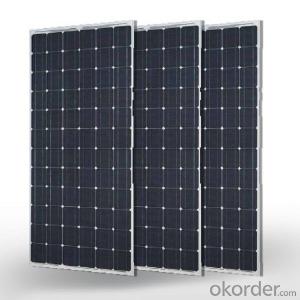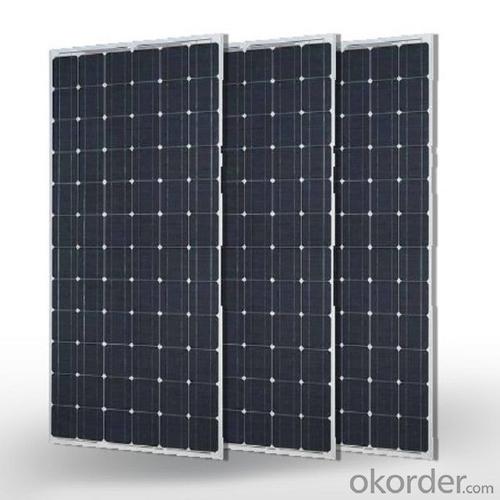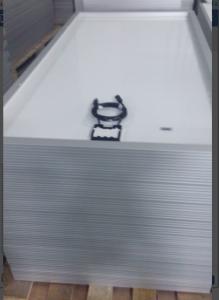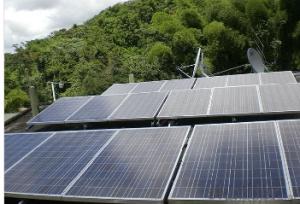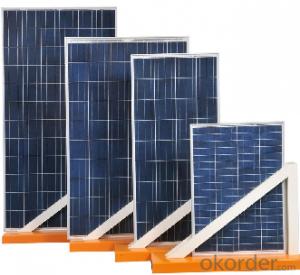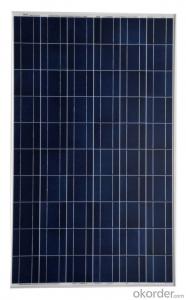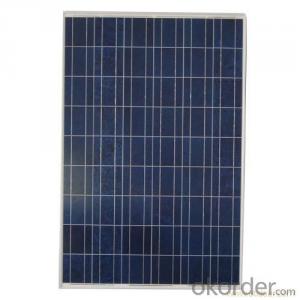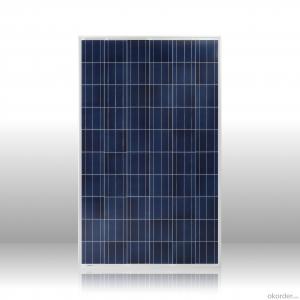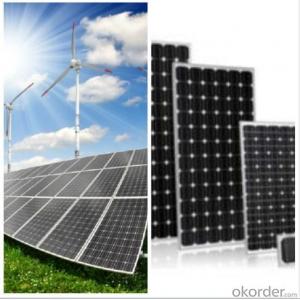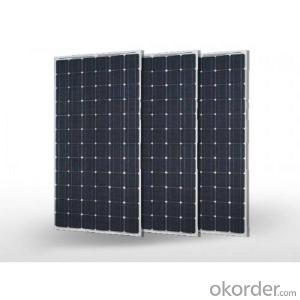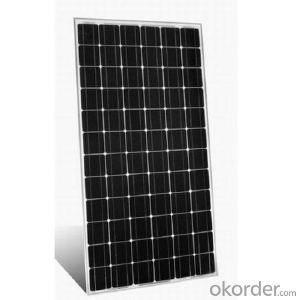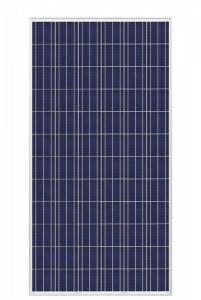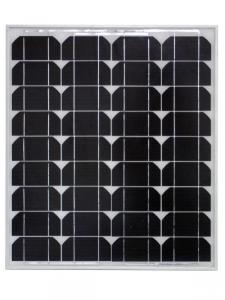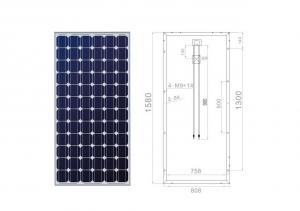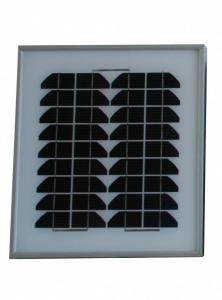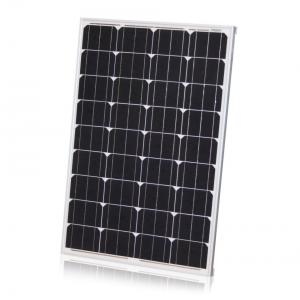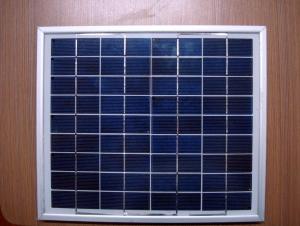Florida Law Solar Panels:High Efficiency 250W Solar Panel Poly for Solar Modules at Good Prices
- Loading Port:
- Shanghai
- Payment Terms:
- TT OR LC
- Min Order Qty:
- 2600 watt
- Supply Capability:
- 26000 watt/month
OKorder Service Pledge
OKorder Financial Service
You Might Also Like
Specification
Features of our products:
• High conversion efficiency mono/poly-crystalline amorphous silicon solar cells
• Modules incorporate high performance bypass diodes to minimize the power drop caused by shading
• High transmittance, low-iron tempered glass
• High performance EVA encapsulant to prevent destroying and water.
• AI frame: without screw, corner connection. 8 holes on the frame can be installed easily
• Good performance of preventing from atrocious weather such as wind and hails
Polycrystalline Silicon Solar Modules 48Cell-195W Specification
ELECTRICAL PERFORMANCE | |||
Power output | P max | W | 195 |
Power output tolerances | ΔP max | W | 0/+5 |
Module effi ciency | η m | % | 14.7 |
Voltage at Pmax | V mpp | V | 23.7 |
Current at Pmax | I mpp | A | 8.03 |
Open-circuit voltage | V oc | V | 30.1 |
Short-circuit current | I sc | A | 8.65 |
Product Description:
This installation Manual contains essential information for the electrical and mechanical installation that your must know before installing CUSTOMER PV modules. This also contains safety information you need to be familiar with .
CUSTOMER does not assume responsibility and expressly disclaims liability for loss, damage, or expense arising out of in anyway connected with installation, operation, use or maintenance of the PV modules. No responsibility is assumed by CUSTOMER for any infringement of patents or other rights of third parties that may result from use of PV module.
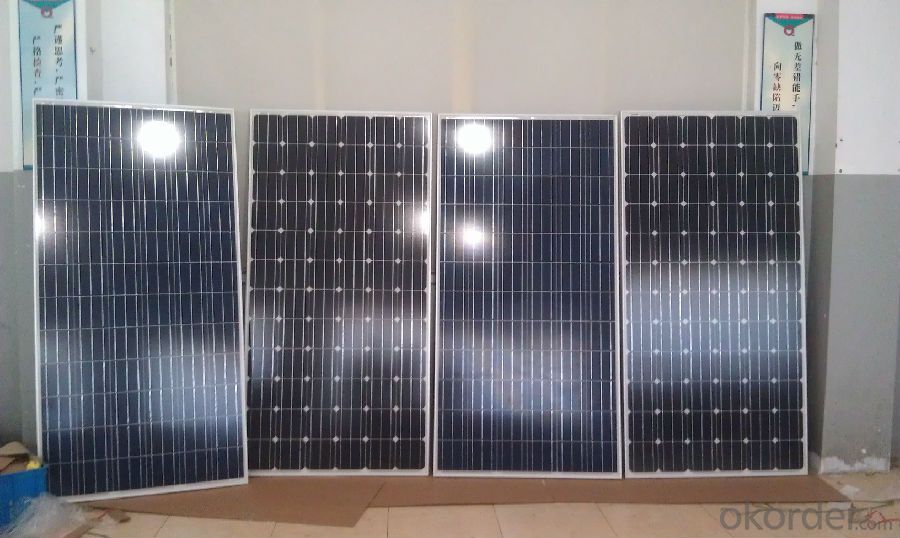
Solar panel working process
In addition to being the ultimate source of all life on earth, the sun is an infinitely renewable, completely pollution-free source of electricity. Instead of burning fossil fuels dug up from the ground in a big power plant – a very 19th century, industrial age approach, when you think about it – solar panels convert sunlight directly into electricity, with no harmful emissions.
Specification of Solar Monocrystalline Series
- Optimal permutation on solar cells to keep enough heat diffusion, decreases hot spot effect.
- High quality and anti-ageing EVA, weather resistance backside raw materials assure reliable solar panels.
- Passed 5400Pa mechanical loads testing by UL, can withstand bad and high mechanical load working environment.
- With good sealed performance, moisture resistant, aging resistance, high/low temperature resistant, the inner terminals of our junction box owns good electrical performance transmission. Bypass diodes used can avoide hot spot effect and damages to panels. Output cables and mating connectors are safe and reliable for installation application. Adopt weather resistance, sealed, good sticky silica gel when assembling.
- Strict quality inspection on each procedure and 100% electrical performance test to meet power requirements.
- 0~+3% power tolerance.
- classification for all the panels in order to improve the integral performance of system and solar panel life span.
- TUV、UL、MCS、CE、ROHS、Golden Sun certified
- Underwriting of 25years output power warranty by The People's Insurance Company of China.
- Q: I am building a solar panel I have wired in series 36 .5 volt solar cells to produce 8 volts I have another panel that has 34 .5 volt solar cells to produce 7 volts. Any issues with wiring these 2 arrays in Parallel? I.E. would the smaller array take usable power away from the larger array?
- Hmmm (8v -7v)/ 0 ohms .... shakes head....
- Q: Hi, I want to put some solar light in my yard, and wondering if a 00w solar panel could work for a few 3w dc lights....do i need a battery so they run at night, if so how many lights do u think i can run/ also i see elading solar light
- You can't really judge the watts for solar lighting the same way you could for dc lighting. This is because of several factors The lights that you showed ARE NOT high quality lights and furthermore; they are not a well-known brand. Also, I would be suspicious of any store that offers lights for less than half of what other stores do. They are dumping the merchandise, which means it could have been sitting around for a while. MAXSA Innovations makes good solar lamps, so does Solar Goes Green. As the other responder wrote, you are better off using dedicated solar spot lights or floodlights than trying to integrate a solar panel into regular solar lights. A 00 Watt solar panel is pretty strong, and you also would need a battery. Unless you know how to rig up the system with appropriate controllers to make sure too much energy doesn't get into the rechargeable battery (lithium ion or NiMH), you take a risk on having the whole system fry out.
- Q: I hooked up a 2V solar panel to a small relay. The relay switches at 9V. When I have light shining on the panel it puts out aorund 3-4V, but when I hook it up directly to the relay it drops to V and doesn't switch the relay. Why? and How do I fix it?-2V Mono-Crystalline Solar Panel -JWD 7 4 reed relay
- Your solar panel output too little current that cannot be used to power the relay. Change the panel into 2V 500mA type shall work.
- Q: can you buy single solar panels say to power a washing machine fridge etc.if so where can i buy them from
- Yeah, just find out how much electricity your fridge or washing machine uses, (look on the internet), and buy solar panels for just that amount of energy. Solar panels can power from watt to 224 watts! ~MaDiSoN
- Q: hey, Im going into my senior year at high school and after that will be moving to Pennsylvania where my family has a house on ten acres and I will be going to college there and living all year around. My father wants to build a huge barn for our cars and other stuff like tools, I mentioned too him what about solar panels on the roof to power maybe the house and barn. Would this be a good Idea? Where would be the best place to look into getting solar panels be? Thanks for anyones help!
- This is a site that can help you estimate the size and number of panels that will power what you intend to provide for. There are plenty of sites selling the panels, so compare prices. Also, check whether your state is offering the rebate like the state of CA is and what the restrictions, terms and conditions are. Even with the rebates they are very costly, so be certain to calculate the pay off period for your application to see whether it is a cost efficient option for your energy usage.
- Q: Any opinion on harbor freight solar panels ?
- Actually, if you are looking to start slow and inexpensive, they are an economical way to get your feet wet, so to speak. I also tried the make them yourself kits, where you get a stack of cells, a frame and solder and you have to get the glass and assemble it yourself. I combined the Harbor Freight kit with one of those panels. Problems you will run into start with the kit having no inverter and not much information on any kind of power storage, you get to work that out for yourself. I initially wired them to provide all the power for the ceiling mounted lights in a small house, on a totally independent circuit, using 3 car batteries for storage. It worked perfectly, however the code inspector I got from the City could NOT fathom that my system had no connection whatsoever to his grid and would not pass it, even though I showed him the separate breaker box that was not supplied by the line coming into the house for the rest of the power. I finally gave up on him and put the lights back into the main system and use the solar setup to charge cell phones and occasionally power a lamp, as the inverter has plugs right on it. It keeps those car batteries fully charged going on 4 years now, with no issues detected at all.
- Q: Can solar panels be used to power a sports stadium?
- Yes, solar panels can be used to power a sports stadium. By installing a sufficient number of solar panels on the roof or in nearby areas, a sports stadium can generate renewable energy to meet its electricity needs. This can help reduce reliance on traditional energy sources, lower operating costs, and contribute to a more sustainable and environmentally friendly venue.
- Q: wondering if i should get them?? not sure if its worth leasing? also anyone know anything about solar city?
- Solar panels can be worth it but it is more complex issue than that. It will always be more efficient to add insulation, change to high efficiency lights, more efficient appliances, etc, first to try and save energy. However, if you have done all of that and you have a south facing area whee they could be mounted and you live in an area with a decent amount of sun, then they could pay off. I have no experience myself with Solar City, but I know from word of mouth they are good. I can recommend from first hand experience REC Solar. I have 20 of their panels on my south facing roof. They have a leasing deal or a deal where you buy the system outright (which is what I did) but for less than you might think. I'd be glad to help you if you had any other questions.
- Q: Can solar panels be used in areas with high levels of heatwaves?
- Yes, solar panels can be used in areas with high levels of heatwaves. In fact, solar panels are designed to convert sunlight into electricity, and they perform better in areas with higher levels of sunlight and heat. However, it is important to consider the impact of excessive heat on the efficiency and lifespan of solar panels. Proper installation, maintenance, and cooling measures may be required to ensure optimal performance in areas with extreme heat conditions.
- Q: How do solar panels and heaters work?
- Solar panels are solar powered- they use energy produced from the sun. While heaters- receive already produced energy to produce heat... hope this helps!
Send your message to us
Florida Law Solar Panels:High Efficiency 250W Solar Panel Poly for Solar Modules at Good Prices
- Loading Port:
- Shanghai
- Payment Terms:
- TT OR LC
- Min Order Qty:
- 2600 watt
- Supply Capability:
- 26000 watt/month
OKorder Service Pledge
OKorder Financial Service
Similar products
Hot products
Hot Searches
